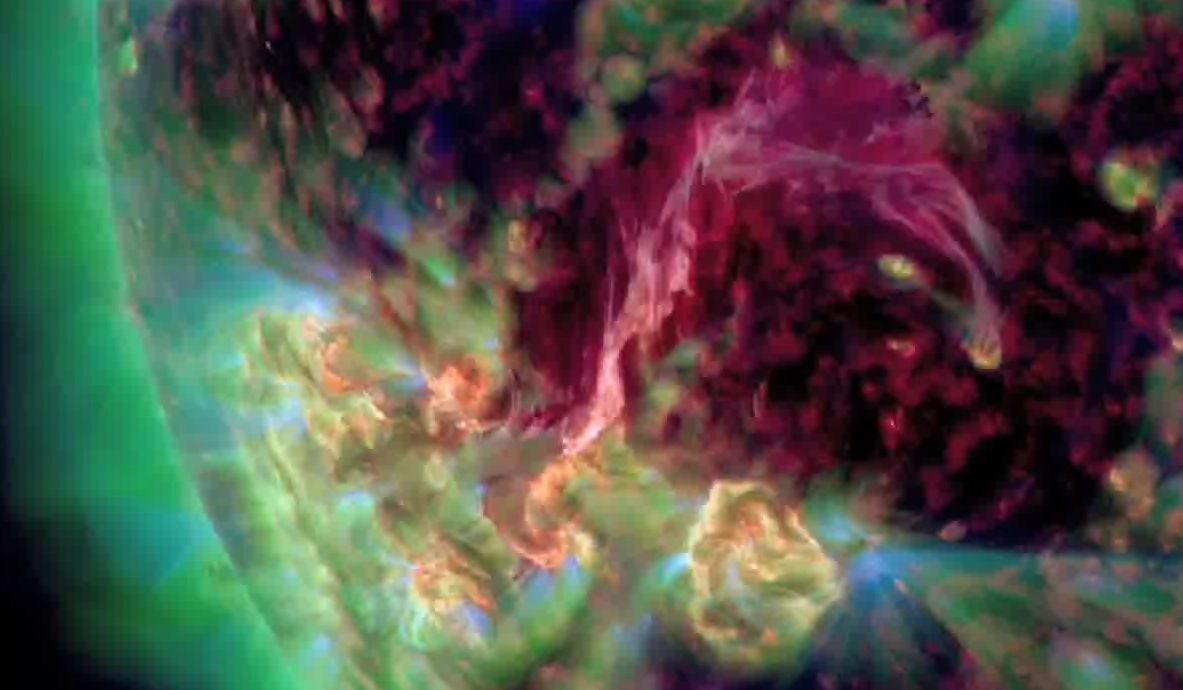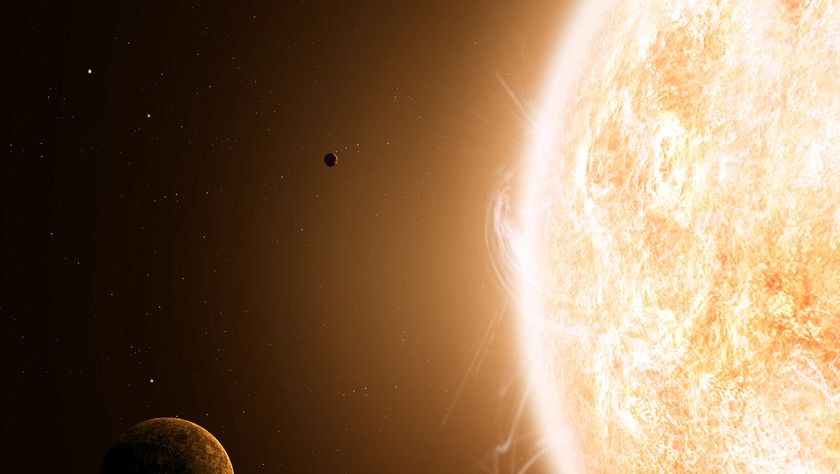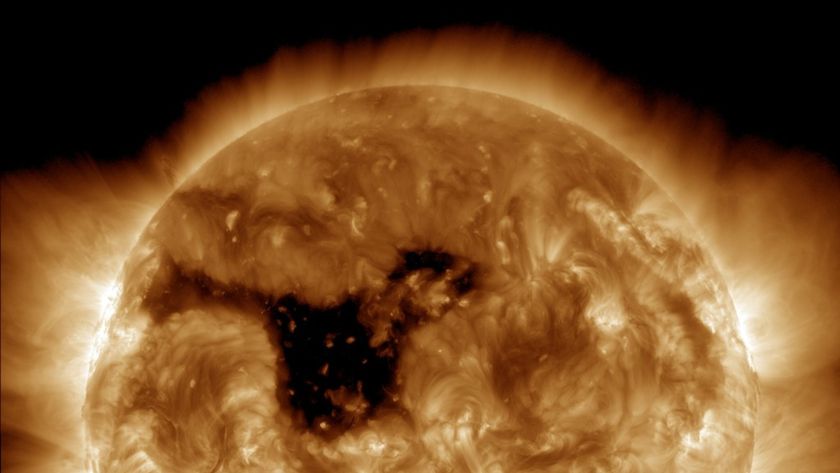Amazing Video Captures Magical-Looking Sun Storm

The sun fired off a spectacular eruption last weekend, and a NASA spacecraft captured amazing video of the violent solar outburst.
A super-hot solar filament erupted in grand style Saturday (Aug. 4), arcing into space and connecting two huge sunspots. NASA's Solar Dynamics Observatory (SDO) spacecraft had a front-row seat for the action, and its video footage of the sun eruption is both bizarre and beautiful.
The filament appears pinkish-purple through SDO's ultraviolet filters, and it stands out against a solar surface of mottled green, yellow and dark purple hues.
The tendril's hot plasma snakes between the sunspots AR 1538 and AR 1540. Sunspots are temporary blotches on the sun that appear dark because they're cooler than the rest of the solar surface. Solar flares and massive blasts of plasma called coronal mass ejections (CMEs) often erupt from sunspots, which can be many times larger than the Earth's diameter.
The Aug. 4 outburst also propelled an enormous CME into space. CMEs that hit Earth directly can wreak havoc, temporarily disrupting GPS communications, satellite navigation and power grids. But Saturday's solar storm shouldn't pose any serious problems, scientists said.
"The cloud is not heading directly toward Earth, but it could deliver a glancing blow to our planet's magnetic field on August 7/8," the website Spaceweather.com wrote. "High-latitude skywatchers should be alert for auroras on those dates."
The sun is currently in an active phase of its 11-year solar cycle, and it should continue to fire off big storms for a while yet. Experts expect the current cycle, known as Solar Cycle 24, to peak in 2013.c
Sign up for the Live Science daily newsletter now
Get the world’s most fascinating discoveries delivered straight to your inbox.
The $850 million SDO spacecraft, which launched in February 2010, is the first in a fleet of NASA efforts to study our sun. The probe's five-year mission is the cornerstone of a NASA science program called Living with a Star, which aims to help scientists better understand aspects of the sun-Earth system that affect our lives and society.
This story was provided by SPACE.com, a sister site to LiveScience. Follow SPACE.com for the latest in space science and exploration news on Twitter @Spacedotcom and on Facebook.
Most Popular





